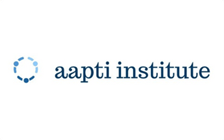Aapti Institute

Identifying Barriers to Women’s Trust in Digital Platforms
Goal
The project’s goal is to surface strategies that can be implemented to improve digital trust among women in DPIs through a qualitative study to identify drivers, limiters, and barriers to women’s trust in digital platforms, including those relating to payments, healthcare, and livelihoods. The strategies will be geared to address issues that women face in their interaction with digital services (access, awareness, and usage).
Target
70 Participatory Vulnerability Analyses (PVAs) and 71 Focus Group Discussions (FGDs); 785 women, 247 men, 383 adolescent girls and 109 adolescent boys participated. In the subsequent phase, we adopted the Human Centred Design (HCD) approach with refined interview tools, focusing on the same four states and regions.
Through our HCD interactions, we engaged with 91 female participants. Out of these, 18 were intermediaries—Anganwadis, ASHA Workers, CRPs—while the remaining 73 participants were in the age group of 13-49.
Approach
- Trust-building strategy to enhance digital trust, opportunities to engage with the government, and the inclusion of digital trust as a metric for engagement across the gender portfolio
- Policy actions to enhance digital trust for women, implementation of services in the last mile
- An interactive tool for digital trust assessment drawn from insights from participative research and
- HCD (Human-Centred Design) to help various stakeholders understand digital trust and assess communities prior to the implementation of programmes
Impact
- Increasing women’s usage of digital public goods/platforms across health, livelihoods, payments, financial and advisory services in the long term
- Reducing the gender divide by better knowledge of trust barriers and making digital platforms more gender intentional
Geographies
States: Maharashtra, Uttar Pradesh, Odisha, and Jharkhand
Focus Areas
Digital trust, Digital skills